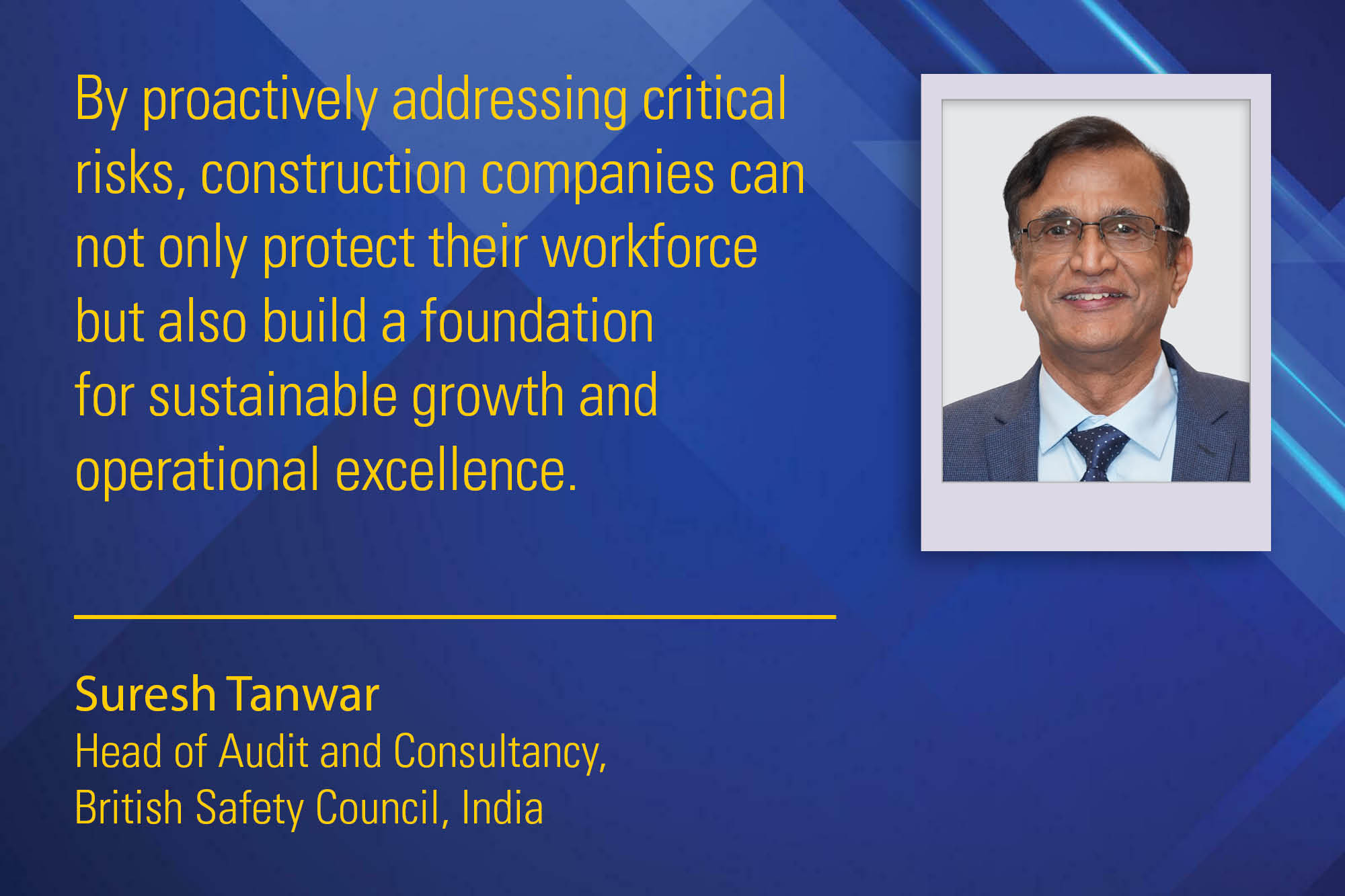Critical risk safety audits are a cornerstone of construction site safety, addressing major hazards like falls and electrocution. As the sector evolves, these audits provide a comprehensive review of safety practices, helping companies manage risks effectively and maintain a safer working environment for all employees.
India’s construction sector stands as a colossal employment powerhouse, engaging an estimated 7.1 crore workers and ranking just behind agriculture as the largest job creator in the country. By 2030, this figure is set to soar beyond 10 crore, reflecting the sector’s growing significance. However, alongside its role as a major employer, the industry grapples with a serious downside: a troubling rate of accidents, injuries, and fatalities.
A study featured in the Scientific World Journal highlights a stark reality: India’s construction workforce, which represents 7.5% of the global labor pool, is responsible for 16.4% of fatal occupational accidents worldwide. The most common causes of these fatal injuries include falls from heights, electrocution, being struck by moving objects, and accidents involving vehicles. Such incidents are critical safety risks and pose significant threats to business operations, potentially halting construction projects and leading to severe injuries or fatalities.
In light of these risks, construction companies and developers must adopt a proactive approach. One effective strategy is to conduct specialised critical risk audits regularly. These audits are essential for identifying and mitigating risks that pose significant threats to both workers and assets.
Understanding the critical risks safety audit
A critical risks safety audit is a comprehensive examination aimed at identifying and addressing high-risk situations that could lead to injury or damage. The audit scrutinises various high-risk tasks, such as working at heights, confined space entry, lifting operations, and electrical and fire safety. It also evaluates specific areas like ground excavation, contractor safety, and specialised tasks such as handling molten metal.
The audit process includes a detailed assessment of an organisation’s safety practices, leadership commitment, risk management procedures, and permit-to-work systems. It involves engaging with employees, conducting on-site inspections, and reviewing documentation meticulously. By focusing on critical risks, the audit helps companies identify potential hazards and areas for improvement, fostering a safer working environment and reducing the likelihood of accidents.
Benefits of conducting a critical risks safety audit
Implementing a critical risks safety audit offers numerous advantages for businesses in the construction sector. For one, it provides construction workers with hands-on learning experiences about hazard reduction, enhancing their understanding of and ability to manage potential risks. The audit also serves as a platform for identifying safety hazards and evaluating the effectiveness of existing safety measures.
By raising awareness and promoting positive safety behaviours, the audit can improve a company’s safety record. It reduces accidents, injuries, and near misses while facilitating root cause analysis and corrective actions. This process helps in setting up on-the-job training for supervisors and workers, ensuring that safety protocols are continuously refined and enforced.
The audit process typically begins with pre-audit meetings to address any questions and plan the audit procedures. During the audit, safety hazards are documented, and necessary corrective actions are outlined. Post-audit discussions are held to review findings, propose improvements, and monitor the implementation of recommendations.
The audit process: A four-step approach
The critical risks safety audit unfolds in four essential phases. First, Leadership Commitment and Planning involves obtaining buy-in from leadership and carefully planning the audit process. This sets the stage for an effective audit. Next, in the Implementation and Operation phase, the safety measures are put into practice throughout the organisation. Monitoring and Measurement follow, focusing on evaluating the effectiveness of these protocols to ensure they align with organisational goals. Finally, Evaluation and Continuous Improvement assess the results and drive ongoing enhancements to safety protocols, promoting a culture of continuous improvement.
Throughout these phases, the active participation and commitment of all organisational levels are crucial for success.
Key takeaways
For industries like construction, which regularly deal with hazardous operations, prioritising critical risks safety audits is essential. Ongoing evaluation and enhancement of safety systems are vital for improving performance across departments. Regular monitoring of policies, systems, and risk control techniques helps maintain a high standard of safety.
It is important to partner with reputable audit and consultancy firms that are globally recognised for their expertise in health and safety systems. Such firms employ experienced auditors who adhere to professional standards, ensuring that audit reports are technically verified and reliable.
By embracing critical risks safety audits, construction companies can significantly improve their safety performance, protect their workforce, and enhance overall operational efficiency.
Cookie Consent
We use cookies to personalize your experience. By continuing to visit this website you agree to our Terms & Conditions, Privacy Policy and Cookie Policy.

















